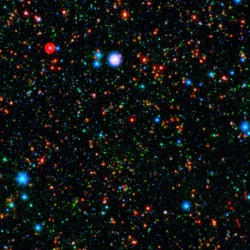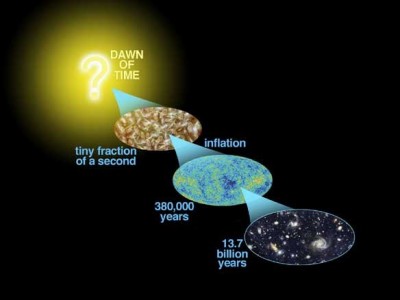
Ancient galaxy cluster still producing stars
The orgin and events surrounding the Big Bang is the greatest mystery in all of science. In 1927, Georges Lemaitre, a Belgian Catholic priest and physicist, published a paper in an obscure Belgian journal, Annales de la Societe Scientifique de Bruxelles, using data collected by Edwin Hubble and two other astronomers up to that time to show a linear velocity-distance relation between the galaxies was posssible, and it supported a model of an expanding universe based on Albert Einstein’s equations for General Relativity.
Two years later in 1929, Edwin Hubble, with his own data, made the discovery at Mount Wilson Observatory located in Los Angeles, California and was publically credited for the discovery. Aside from the controversy surrounding who actually first made this discovery, it was one of the the greatest discoveries of all-time and provided the first proof for the Big Bang which had been proposed by Georges Lemaître in 1927. The observed velocities of distant galaxies, taken together with the cosmological principle, appeared to show that the universe was expanding in a manner consistent with the Friedmann-Lemaitre model of general relativity.
In 1929 Hubble formulated the empirical Redshift Distance Law of galaxies now termed Hubble’s Law, which demonstrates that if the redshift is interpreted as a measure of recession speed, is consistent with the solutions of Einstein’s equations of general relativity for a homogeneous, isotropic expanding space.
In 1917, Albert Einstein had already introduced his general theory of relativity, and produced a model of space based on that theory, claiming that space was curved by gravity. This meant that space must be able to expand or contract. Einstein found this assumption too far fetched and, going against what his own equations were telling him, revised his theory, stating that the universe was static and immobile. To accomplish this, he unnecessarily introduced a cosmological constant (a so call “fudge factor”). When Einstein heard of Hubble’s discovery, he is quoted as having said that changing his original equations was the biggest blunder of his life. He is said to have visited Hubble to thank him in 1931. Perhaps it’s times like this that fueled Einstein’s genius quotes: “Any intelligent fool can make things bigger, more complex, and more violent. It takes a touch of genius — and a lot of courage — to move in the opposite direction.”
By measuring how fast the Universe is expanding, astronomers have been able to calculate backwards and figure out when it originated – 13.7 billion years ago.




 Twitter
Twitter LinkedIn
LinkedIn Youtube
Youtube RSS
RSS